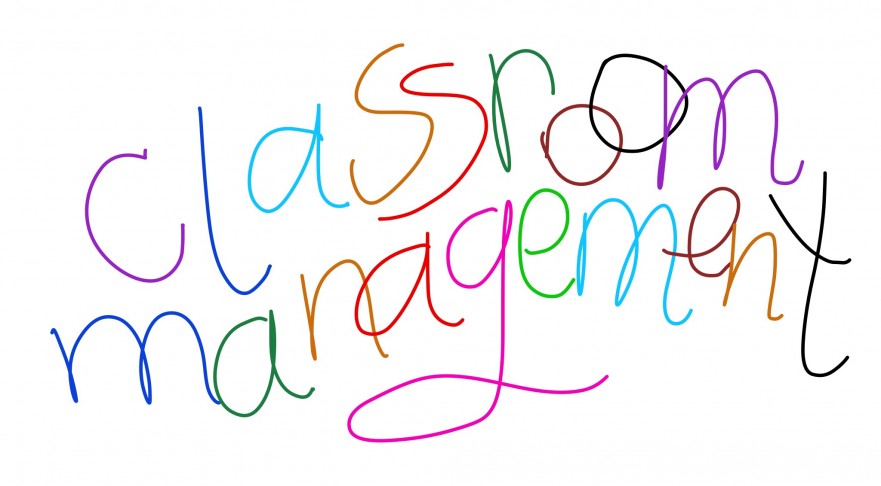Soon, if not already, many schools will start revisiting their classroom management systems. In his “news” letter (his quotations) this week, Jonah Goldberg provides an excellent jumping off point for these discussions: “[W]e need to return to the idea of ideological and theological pluralism but moral consensus.” Rewrite that as, “We need to return to the idea of professional pluralism built on community consensus,” and begin.
Most debates about classroom management go something like this. Someone will express the professionally monismistic opinion that every teacher should have the same rules and punishments in every class. This distinctly plausible generality sounds good and many will say, “Hear, hear!” After all, the same rules everywhere will lead to consistency and predictability. If students know that Behavior X always leads to Punishment Y, no matter whose class they’re in, they’ll quickly stop doing X. And, if we’re enforcing the same rules the same way, we don’t have to deal with the, “Other teachers let us do X, why don’t you?” whine from students. (“Hear, hear!”)
But things will turn distinctly divisive when the faculty gets down to specifics. Just consider what it would take to determine a school wide tardy policy: How, exactly, will they define a tardy? What makes a tardy unexcused? How many unexcused tardies can a student have before being punished? And what will be the punishment? Oh, boy. Even a small faculty could spend hours debating each of those questions, and that’s just one relatively easy behavior issue. Add to that arguments about eating in class, electronics use, and profanity, and get ready to spin you wheels.
Once the faculty finally determines the policy, you’ve got two more problems. First, a non-vanishingly small body of teachers won’t favor the policy they’ve been tasked to execute. Some will do their best to comply, others will comply half-heartedly, and some will make no effort to comply with (and even try to derail) policies they don’t favor. Second, even if everyone does their best to enforce a policy, teachers have different skill levels and dispositions as well as different contexts (Starting a PE class is very different that starting a math class.) that compromise the policy’s consistency and predictability – it’s chief selling point.
Ultimately, therefore, no school-wide classroom rule will, in and of itself, guarantee improved behavior.
There is an alternative, suggested by Goldberg’s quote: Professional pluralism. The claim is that success in improving behavior will come less from the policy than from the teacher’s’ skill at building relationships and training students – and that skill will be most effectively be exploited when teachers are allowed use their own best judgement about what will work in their given context with their given students.
Faculties can much easier reach consensus on a set of ends than on a set of ends and means. For example, keeping with tardies: “Teachers will create a system for beginning their classes in a timely and orderly manner.” Then, once an end is determined, each teacher considers the relevant variables and determines what they hope are the means to reach that end.
With professional pluralism comes professional responsibility. If, after a fair trial, the end isn’t being met (hopefully determined by the teacher, but if need be by an administrator) either the policy will require some tweaking or the teacher will need some help in improving their execution of it. An advantage of the same ends different means approach is that it gives teachers more options to try as they look for their best fit.
It could well be that a team of teachers who share the same students want to have identical policies. No problem. It’s clearly easier for six teachers to reach consensus than 50. Moreover, exceptions based on a team members’ individual context could be accommodated without much fuss.
Now, some readers are thinking, “Wait, you’re putting all the responsibility on the teachers! It’s the students who need to learn to get to class on time!” Fair enough, but in the case of a one-for-all rule, enforcement falls on the teachers, too. Ultimately, we’re back to the principle that success depends on how well the teacher accepts responsibility to train their students to share responsibility for successfully starting classes.
Other readers might be saying, “In my school we have the same rules for each class and it works great!” Fair enough, you’ve beaten the odds. I’d like to know more. For example, how much professional and student diversity is there at your school? And how finely detailed are your policies?
Still more might be saying, “It will be too confusing for students to learn six or seven different policies.” It will take more time to practice and perfect, yes, but I bet if the goal of starting class in a timely and orderly manner is what is emphasized, and if the individual policy clearly enables that end, then students and teachers alike will be more satisfied than with the one-size-fits-all approach.
So, what’s then final word on professional pluralism built on community consensus? “Hear, hear!”









